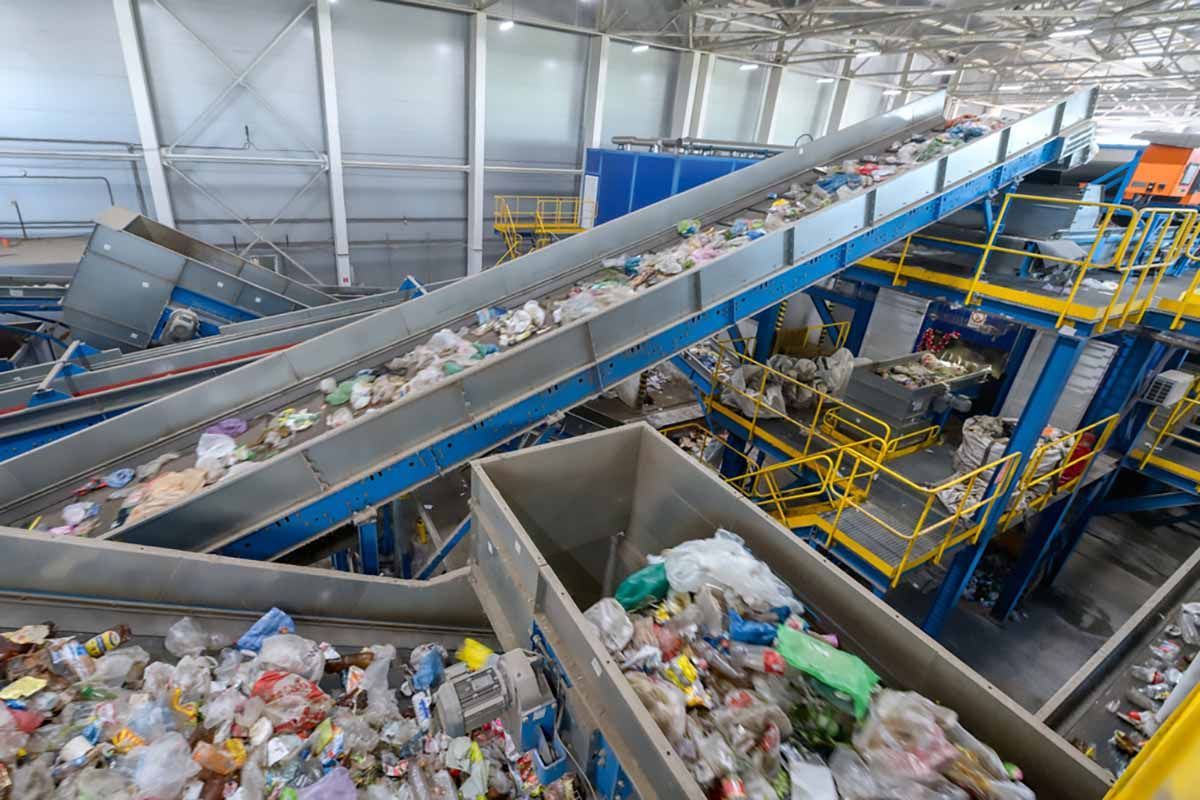From Waste to Worth: Highlights from the Rethink Resource Use Conference
The Northeast Recycling Council (NERC) held their annual event from October 7 – 8 in Boston, MA. Renamed the Rethink Resource Use Conference, the name reflects an update in the approach of managing materials and discussing key strategies to drive sustainable practices forward in communities. “The new name, Rethink Resource Use, makes us consider how we can leave a more positive impact. NERC brings together professionals from across the materials management chain to improve management practices and ensure the health of the people and the environment. The event aims to mobilize others to take action and engage people in recycling programs, community engagement, trends, and more,” said NERC’s Executive Director, Megan Schulz-Fontes. Gathering together leaders from academia, government, and the sustainable materials industry, the conference was a great way to reconnect through networking and learning opportunities.
RRU DAY ONE
Material Shifts and New Terrain
On Tuesday morning, October 7, Schulz-Fontes welcomed attendees to Boston and expressed that she was looking forward to having meaningful discussions and making connections with people around the industry. With great speakers from across the world, a wide range of important topics would be covered from innovations in infrastructure to technology. She also thanked talented colleagues who evaluated this event and made it even better, welcomed emerging professionals, and emphasized that it is important to acknowledge that human practices are shifting and evolving, and new programs and regulations are coming online to address the growing waste problem. We need to safeguard public health and biodiversity to help life on earth.
Schulz-Fontes then introduced John Fischer, Deputy Division Director for Solid Waste Materials Management for the Massachusetts’ Department of Environmental Protection, who made the opening remarks, reflecting on Massachusetts’ Solid Waste master plan. He pointed out that they set an aggressive reduction goal—to reduce 1.7 tons of waste by 2030. While they have seen progress in certain areas, waste has continued to rise. So, they are reviewing it now to see how they can shift elements for greater progress. Massachusetts has been successful in food waste reduction (from small businesses and residents) with a waste disposal ban and recycling market grants, as well as loans to try to build the infrastructure. He said they have also seen success in their mattress disposal ban and an increase in textile recovery since implementation in 2022. There is also a long-standing disposal ban on construction waste to ensure more effective separation. In 2020, diversion was at 15% and increased to 20% in 2025. They would like to get to 30% by 2030. Fischer also pointed out that the Massachusetts DEP needs to take a comprehensive approach and grow market funding. They have collaborated with state and local health officials to create best practices with food containers and replace single waste food service ware to reusables. There are growing suites of market recycling program grants, including market reduction innovation grants launched this year. Smaller and more flexible grants could grow waste diversion over time and help facilities grow at scale. He said that while they are looking at doing the best they can to manage waste, the goal is to learn from colleagues in other states and in the business communities.
David Allaway, Senior Policy Analyst, from the Oregon Department of Environmental Quality, gave the keynote address, first pointing out that about 20 years ago, they started taking a deeper look at their solid waste and recycling program and the connection with the waste and climate situation. Because of that, it caused a shift in programming. Going back to 2004, the Department was tasked with looking at solid waste management opportunities—recycling and waste prevention was primarily reducing in other states but not Oregon. The community was ready for climate protection, but emissions reductions don’t count. That was the beginning of Oregon’s Consumption-Based Greenhouse Gas Emissions Inventory (CBEI) and the results were an eye opener and the inventory has been updated since to look at current trends. The key takeaways from this was that all studies point in the same direction—materials matter! The production and use of materials does have a profound impact on our environment. Most impacts occur upstream of use and disposal. Recycling and composting can be helpful but alone are insufficient. From this, Oregon’s 2050 Vision and Framework for Action was born. This also included end of life materials. Allaway explained that the legislative report and technical supports were published last fall. For Oregon:
- Materials are driving growth in emissions
- Most emissions occur pre-purchase (most in food and vehicles and parts)
- Sector based emissions have flattened while consumption-based emissions have grown
- Emissions are out of state but not out of reach
Oregon Comprehensive Climate Action Plan (Reduce, Reuse, Recycle, and Solid Waste Management) includes:
- Landfill methane reductions
- Recycling improvements
- Expand composting
- Prevent wasting of food
- Plant-rich diets
- Upstream packaging EPR
- Reduce embodies carbon
He pointed out that not all materials are equally beneficial to recycling, and not all recycling pathways are equally beneficial. Maximizing recycling is not the same as optimizing recycling. Lifecycle impacts versus material attributes begs the question; how well do popular material attributes correlate with reduced environmental impacts? When comparing different packages based on recyclability, recyclable packages are better for the environment, however, downstream impacts must be taken into consideration. Recycling and composting are a means to an end—the conservation of resources and reduction of pollution, however, not all are effective. Design your programs to maximize them instead of just chasing tonnage diversion targets. Is education effective? It depends on how recycling is communicated and how local authorities think about it and treat it. Whether it is advanced through policy through broader benefits, it depends on you and what choices you make and the paths take in the coming years.
Discussions on EPR
After the welcome remarks and morning keynote, focus turned to “EPR for Packaging State of Mind: Lessons and Progress in the Northeast” Moderated by Kevin Budris, Deputy Director for Just Zero, the discussion featured Jason Bergquist, Vice President of U.S. Operations for RecycleMe; Erin Victor, PhD, Member of the Senator George J Mitchell Center Research Team at the University of Maine; Shannon McDonald, Natural Resource Planner at the Maryland Department of the Environment; and David Allaway, Senior Policy Analyst for Oregon Department of Environmental Quality.
Bergquist kicked it off by talking about the current EPR landscape in the U.S. Seven EPR packaging bills have been passed and 10 states have introduced legislation for EPR for packaging from 2024 to 2025; this number continues to rise. Those that have been signed into law include Oregon and Maine (2021), Colorado and California (2022), Minnesota (2024), and Washington and Maryland (2025), with implementation ranging from July 2025 to July 2029. California has the most ambitious goals—by 2032 100% of all packaging must be recyclable or compostable, 65% of all single-use plastic packaging to be recycled, and there should be a 25% reduction in packaging. He said that challenges producers face in the west are when is a producer a producer, when is a package a package, where should the focus be (fees, targets, modulation plans). There are always different definitions, two different scopes, bottle bill vs non-bottle bill, primary, secondary, tertiary—which is in scope?
Victor covered the research she’s been doing the past couple of years. Her research approach included a qualitative case study of the emergence of Maine’s EPR for packaging legislation situated within a larger 24-month ethnographic research project on the politics of disposable packaging. Maine is a primarily rural state and much of it relies on drop off centers. However, the state has yet to meet the 50% waste diversion goal, so something more needs to be done. She did explain that there have been disruptions to Maine’s materials management system that have been a challenge: centralized waste planning agencies disbanded, Green Fence/National Sword, COVID, and the shuttering of the Coastal Resource of Maine facility in Hampden. Maine’s packaging journey started in 2019 when the DEP recommended EPR for packaging. In 2021, the state passed the first in the nation EPR law, the rules were adopted in 2024, and in 2025, the goal is to define ‘readily recyclable’ and selecting a stewardship organization. She emphasized that it is critical to have a strong commitment to stakeholder outreach, maintain municipal operational control over materials management, look at the need for more transparent and robust data and the burden of reporting (for both producers and municipalities), and consider what elements of packaging regulation to address through market-based approaches versus command-and-control regulations. Fortunately, LD1423 was introduced this year which really updated and harmonized the program. She said that she is currently working on estimating the impact of tradeoffs in U.S. EPR rulemaking scenarios.
Read the full article on Waste Advantage.
Share Post





